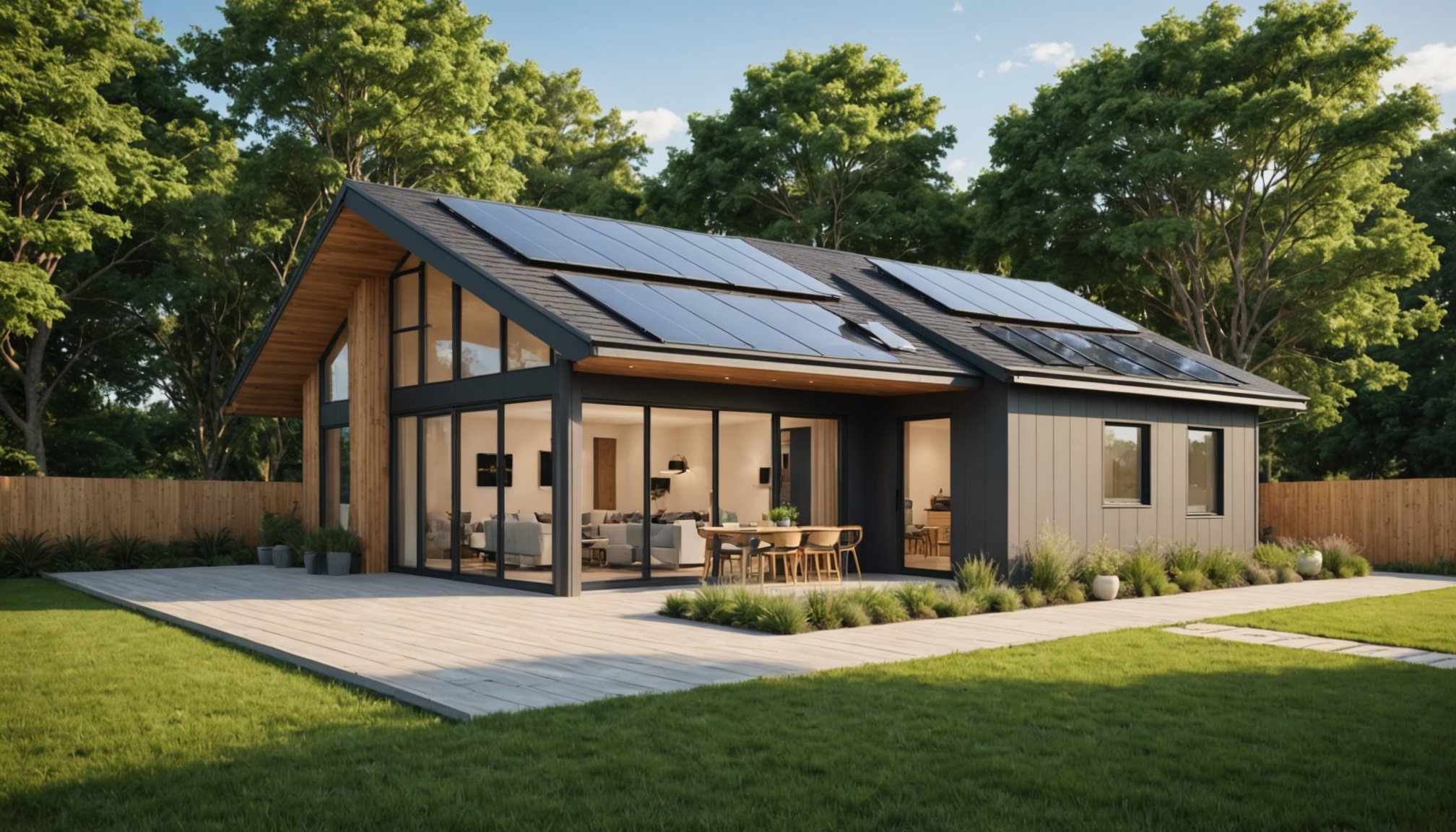Overview of Innovative Eco-Friendly Home Solutions
Embark on a journey towards eco-friendly housing, where innovative solutions sculpt sustainable living spaces. In the quest for green living, understanding the essence of sustainable solutions becomes paramount. These eco-friendly home solutions are not mere trends but pragmatic approaches to reducing environmental footprints.
A crucial element in modern housing design, these solutions redefine future housing standards, offering energy efficiency and sustainable resource utilisation. The market for sustainable housing is expanding, driven by consumer demand for green living options and bolstered by advancements in technology. As society becomes more environmentally conscious, the emphasis on eco-friendly solutions grows, setting new benchmarks for the housing industry.
This might interest you : Top Home Renovation Trends to Keep You Ahead of the Game
Adopting eco-friendly solutions doesn’t just benefit the environment; it also enhances property values and attracts eco-conscious buyers. By integrating technologies such as solar panels, energy-efficient appliances, and sustainable materials, homeowners can significantly reduce energy costs and carbon emissions. With these innovations, eco-friendly housing paves the path to a sustainable future.
Key Innovations in Eco-Friendly Home Technologies
In the realm of sustainable technology, significant strides have been made in green innovations, revolutionising modern living spaces with advanced smart home solutions. These technologies not only optimise home efficiency but also reduce environmental impact.
Have you seen this : Innovative Home Renovation Tips for Thriving During Uncertain Times
Solar Energy Solutions
Solar panels stand out as an incredibly effective measure, transforming sunlight into usable energy, drastically reducing electricity bills and carbon footprints. Case studies highlight successful implementations: residential areas with solar arrays have observed up to 50% reduction in energy costs. Additionally, the long-term environmental benefit is clear—less reliance on fossil fuels leads to lower emissions.
Smart Home Automation for Energy Efficiency
Smart home products are rapidly becoming synonymous with sustainability. By automating systems such as lighting and heating, energy waste is minimised. Homeowners can monitor and manage usage remotely, ensuring energy is only utilised when necessary. Notably, self-adjusting thermostats and intelligent lighting have become staples in eco-friendly homes, showcasing dramatic reductions in consumption.
Water Conservation Technologies
Water conservation is another pillar of sustainable technology. Systems like rainwater harvesting and greywater reuse significantly reduce mains water dependency. Fixtures designed for low-flow improve efficiency while maintaining performance. Deployment of these technologies has shown effective water savings, supporting broader environmental sustainability goals.
Case Studies of Eco-Friendly Home Transformations
Explore success stories in transforming homes into sustainable living spaces. These real-world examples demonstrate how eco-conscious initiatives can reshape communities and enhance property values.
One noteworthy instance is a neighbourhood in California where several homes adopted eco-friendly housing strategies. By installing solar panels and leveraging water conservation technologies, these homes reduced energy bills and minimised environmental impact. Residents reported significant savings, with energy costs dropping by half in some cases.
These transformations also boosted community engagement and increased property values. As eco-conscious builders implemented sustainable solutions, potential buyers became more interested. This shift reflects a growing trend towards sustainable living, appealing to environmentally aware consumers.
Homeowners shared testimonials expressing satisfaction with their eco-friendly homes. They noted not only financial benefits but also a sense of contributing to broader environmental goals. Such feedback emphasised the appeal of living sustainably, making these examples compelling for those considering similar changes.
In summary, these success stories highlight the practical benefits of embracing eco-conscious solutions, illustrating both personal and communal advantages. Pursuing these initiatives can turn individual properties into models of sustainability, aligning with the future vision for eco-friendly housing.
Industry Trends Shaping Eco-Friendly Solutions
The sustainable housing market continues to evolve rapidly, driven by emerging green building trends. Regulatory changes are paving the way for advancements, ensuring that sustainable practices become mainstream. Several nations have introduced stringent guidelines for energy efficiency and resource management in residential construction. These regulations compel builders to adopt eco-friendly technologies and materials. Such industry-wide changes support the creation of homes that naturally consume fewer resources and have reduced environmental footprints.
Innovations in sustainable industry practices are setting benchmarks for future housing solutions. For instance, the integration of smart home technologies with renewable energy sources is gaining popularity. This trend enhances home efficiency and offers significant cost-saving opportunities for homeowners. Practical applications, like solar-building integration and water-efficient systems, are also seen as crucial components of future housing solutions.
Predictions point towards the increasing role of sustainable materials in construction. By focusing on recyclability and minimal environmental impact, these materials are redefining building standards. As the industry adapts to these trends, green living is expected to become the norm, not just an option. Such initiatives align with global environmental goals and contribute positively to combating climate change.
Practical Tips for Implementing Eco-Friendly Solutions
Embracing eco-friendly practices in home improvement requires careful planning and understanding of sustainable materials. Opt for materials like bamboo flooring and recycled metal, which offer durability while minimizing environmental impact. Focus on locally sourced products to reduce transportation emissions and support local economies. Many governments provide financial incentives, such as tax credits or rebates, to offset the initial costs of green renovations.
Choosing Sustainable Materials
Selecting the right sustainable materials is crucial. Look for products certified by recognised environmental organisations, which ensure compliance with sustainability standards. When sourcing materials, consider their lifecycle impact, including how they are produced, used, and disposed of.
Integrating Nature into Home Design
Biophilic design enhances mental well-being by incorporating nature, through features like indoor gardens or green walls. These elements not only beautify a space but also improve air quality by filtering toxins.
Community Involvement and Education
Community efforts play a vital role in promoting green renovation. Participate in local workshops or eco clubs to learn and share sustainable practices. Community-driven initiatives foster a culture of sustainable living, encouraging neighbours to adopt eco-friendly solutions.






